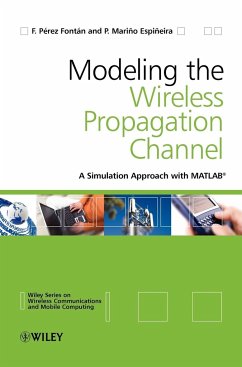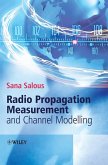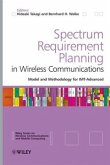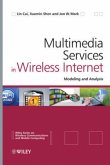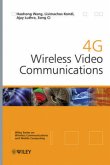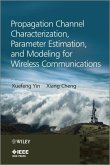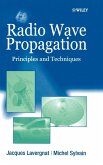Each chapter in this book begins with a brief theoretical overview, then moves to a step-by-step simulation procedure, and finally provides results with comments. The coverage includes: Introduction to wireless propagation, Shadowing effects, Coverage and interference, Introduction to multipath, Multipath Narrowband channel, Shadowing and multipath, Multipath Wideband channel, Propagation in micro and pico-cells, Mega-cells. The land mobile satellite (LMS) channel, The directional Multipath channel and MIMO and Propagation effects in fixed radio links (terrestrial and satellite).
A practical tool for propagation channel modeling with MATLAB® simulations.
Many books on wireless propagation channel provide a highly theoretical coverage, which for some interested readers, may be difficult to follow. This book takes a very practical approach by introducing the theory in each chapter first, and then carrying out simulations showing how exactly put the theory into practice. The resulting plots are analyzed and commented for clarity, and conclusions are drawn and explained from the obtained results.
Key features include:
A unique approach to propagation channel modeling with accompanying MATLAB® simulations to demonstrate the theory in practice
Contains step by step commentary and analysis of the obtained simulation results in order to provide a comprehensive and structured learning tool
Covers a wide range of topics including shadowing effects, coverage and interference, Multipath Narrowband channel, Multipath Wideband channel, propagation in micro and pico-cells, the land mobile satellite (LMS) channel, the directional Multipath channel and MIMO and propagation effects in fixed radio links (terrestrial and satellite)
The book comes with an accompanying website that contains the MATLAB® simulations and allows readers to try them out themselves
Well suited for lab-use, as reference and as a self-learning tool both for advanced students and professionals
Modeling the Wireless Propagation Channel: A simulation approach with MATLAB® will be best suited for postgraduate (Masters and PhD) students and practicing engineers in telecommunications and electrical engineering fields, who are seeking to familiarise themselves with the topic without too many formulas. The book will also be of interest to network engineers, system engineers and researchers
A practical tool for propagation channel modeling with MATLAB® simulations.
Many books on wireless propagation channel provide a highly theoretical coverage, which for some interested readers, may be difficult to follow. This book takes a very practical approach by introducing the theory in each chapter first, and then carrying out simulations showing how exactly put the theory into practice. The resulting plots are analyzed and commented for clarity, and conclusions are drawn and explained from the obtained results.
Key features include:
A unique approach to propagation channel modeling with accompanying MATLAB® simulations to demonstrate the theory in practice
Contains step by step commentary and analysis of the obtained simulation results in order to provide a comprehensive and structured learning tool
Covers a wide range of topics including shadowing effects, coverage and interference, Multipath Narrowband channel, Multipath Wideband channel, propagation in micro and pico-cells, the land mobile satellite (LMS) channel, the directional Multipath channel and MIMO and propagation effects in fixed radio links (terrestrial and satellite)
The book comes with an accompanying website that contains the MATLAB® simulations and allows readers to try them out themselves
Well suited for lab-use, as reference and as a self-learning tool both for advanced students and professionals
Modeling the Wireless Propagation Channel: A simulation approach with MATLAB® will be best suited for postgraduate (Masters and PhD) students and practicing engineers in telecommunications and electrical engineering fields, who are seeking to familiarise themselves with the topic without too many formulas. The book will also be of interest to network engineers, system engineers and researchers

